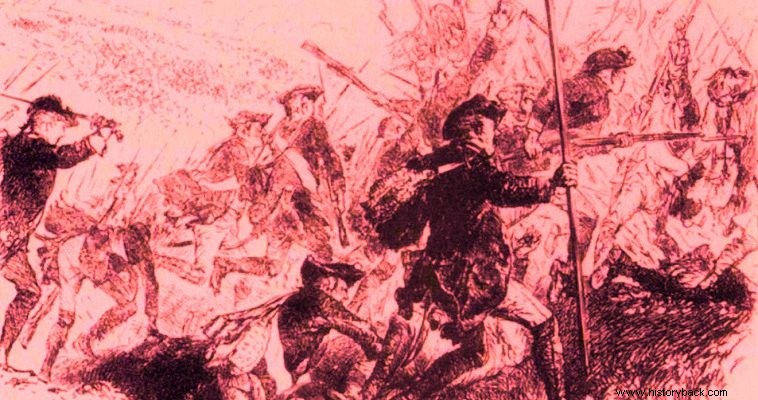
During the Seven Years War Frederick the Great of Prussia allowed the formation of "free corps" (Freikorps) which could fight as light infantry and line infantry. These divisions were made up of volunteers, deserters and every available man. Consequently their quality varied dramatically. But the Somma d'Angelelli was one of the best.
The Free Corps d'Angelelli was formed in 1756. It had a single battalion of five companies. Each company numbered 104 men. It also had two very light guns of 1 pdr. In 1758 the battalion numbered 811 men while in 1759-60 a second battalion was formed.
The corps was formed by the German-Italian colonel and later lieutenant general Ludwig Marquis d'Angelelli de Malvezi.
The corps undertook its first war mission on May 2, 1757, escorting a supply convoy. On November 22, the battalion distinguished itself in the battle of Breslau, defending for hours the village of Kleinburg against three times as many elite Austrian grenadiers. When he was forced to retreat he deployed a short distance behind the burning village and held his new positions fighting heroically.
He also distinguished himself in the great battle of Luten (December 5, 1757), taking part in the battle that gave victory to the Prussian army. In fact, he supported the Prussian cavalry exceptionally well with his fire. In March 1758 the battalion was surprised by the Austrian light divisions and lost 51 men and its two guns.
He then fought at the defeat of Hochkirch where Frederick was surprised and defeated by the Austrians. The corps suffered heavy casualties in the said conflict. The corps was reorganized and equipped with escort guns of 3 pdr. Then the 2nd Battalion was formed.
The 1st Battalion participated in the Battle of Landeschute in 1760 but was disbanded. But his remnants continued to fight and participated in the lifting of the siege of the city of Kolberg by the Russians. Later he participated in the operation to recapture Berlin also from the Russians.
In 1761 the corps operated with its two battalions united, attached to the corps of Frederick the Great's brother and excellent general Prince Henry of Prussia. The 2nd Battalion was destroyed fighting the French. The corps continued to fight until the end of the war when it was disbanded and its men joined the Prussian regular army.
